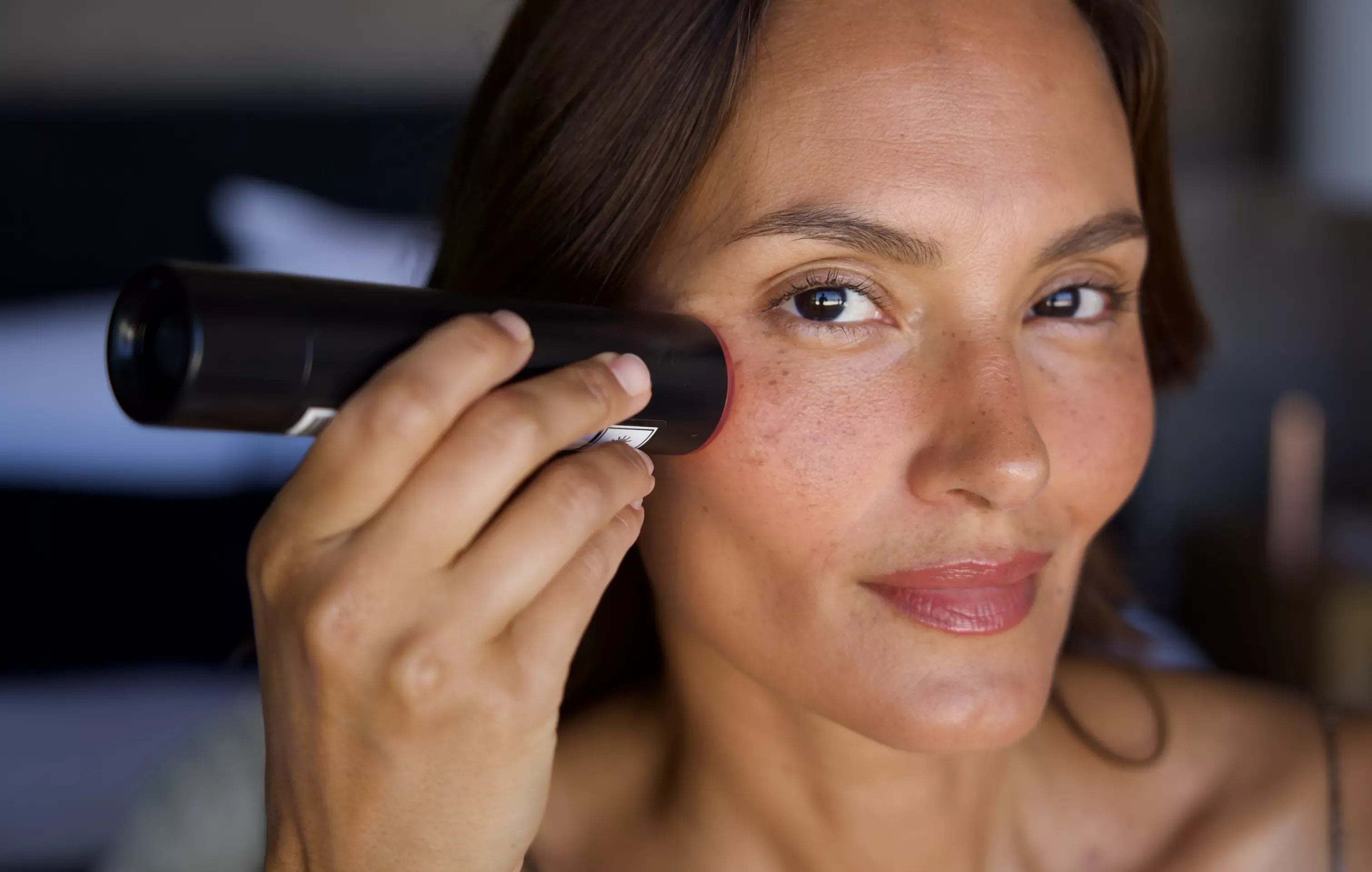Discover how low-level laser therapy can help pregnancy melasma.
As if pregnancy wasn’t filled with enough of its own unique challenges and joys, it can also bring about certain skin concerns for expectant mothers. One common issue that many women may face during pregnancy is melasma, also known as the "mask of pregnancy".
Melasma presents as dark, discolored patches on the face, particularly on areas like the cheeks, forehead, and upper lip. These patches can be distressing for some, but those who suffer can rest assured they are not alone. Celebrities such as actress Mandy Moore, known for her roles in "This Is Us" and "A Walk to Remember”, have also spoken out recently on their personal pregnancy melasma challenges.
What is Pregnancy Melasma?
While melasma, or pregnancy pigmentation, is often associated with hormonal changes during pregnancy, it is essential to note that not every case of melasma is directly linked to this. Factors like genetics, sun exposure, and skin type can also contribute to the development of melasma.
One approach to treating melasma, particularly for those looking for a painless and easy-to-use at home laser skin treatment, is the LYMA Laser – the exact same device which People Magazine featured Mandy Moore using to tackle her own pregnancy skin issues. The LYMA Laser has been engineered using Low-Level Laser Therapy (LLLT), and is completely painless and non-invasive. This ‘cold laser’ therapy works at a cellular level and does not cause any skin damage, so is ideal for those suffering skin sensitivities during pregnancy.

How Low-Level Laser Therapy (LLLT) Can Help With Melasma
Recently dermatologists have introduced Low-Level Laser Therapy as a treatment which can help with pigmentation and melasma. This non-invasive laser skin tightening and pigmentation treatment uses specific wavelengths of light to target the pigment-producing cells in the skin, reducing pigmentation and improving skin texture.
A recent study published in the Journal of Cosmetic Dermatology titled "Low-level laser therapy (LLLT) in the management of melasma: A systematic review and meta-analysis" aimed to evaluate the efficacy and safety of LLLT in treating melasma. The key findings of the study are as follows:
Efficacy: The study found that LLLT significantly improves melasma by reducing pigmentation and enhancing overall skin appearance. The meta-analysis included various clinical trials that demonstrated a marked reduction in melanin content and pigmentation scores among participants receiving LLLT.
Safety: LLLT was found to be a safe treatment option with minimal side effects. Most of the adverse effects reported were mild and transient, such as slight inflammation and swelling, which resolved within a few hours to days.
Mechanism of Action: LLLT works by delivering specific wavelengths of light that are absorbed by melanin in the skin. This absorption leads to the breakdown of excess melanin and stimulates collagen production, promoting skin regeneration and reducing pigmentation.
Consistency Across Studies: The systematic review included multiple studies that consistently reported positive outcomes for melasma treatment using LLLT, indicating its reliability and effectiveness.

How the LYMA Laser Works
The LYMA Laser employs advanced low-level laser therapy (LLLT) technology, designed to target and treat various skin concerns, including hyperpigmentation. Here’s how it works and why it’s safe and effective:
Targeted Wavelengths: The LYMA Laser emits a precise wavelength of light that penetrates the skin to reach the pigment-producing cells (melanocytes). This light energy is absorbed by the melanin, causing it to break down and disperse, effectively reducing hyperpigmentation.
Stimulation of Collagen Production: In addition to targeting melanin, the LYMA Laser stimulates collagen production. Collagen is crucial for skin repair and rejuvenation, helping to improve skin texture and tone, and reducing the appearance of fine lines and wrinkles.
Non-Invasive and Safe: The LYMA Laser is non-invasive, meaning it does not require any surgical procedures or injections. Thanks to its two ultra-diffusing lenses rendering the laser cold, it's so safe that you can even use it around your eyes with no goggles.
Clinical Validation: The effectiveness and safety of LLLT, including the technology used in the LYMA Laser, are backed by numerous clinical studies, as highlighted by the systematic review. These studies confirm that LLLT is a reliable and effective method for treating hyperpigmentation and other skin concerns.
Safe Combination with Traditional Treatments: The LYMA Laser can be safely used in combination with traditional treatments, such as topical creams, to achieve optimal results.
Pregnancy melasma can be distressing, but with advancements in dermatological treatments such as the LYMA Laser and low-level laser therapy, expectant mothers now have access to safe, proven, at-home solutions. By understanding the benefits of LLLT and seeking professional advice, women can take proactive steps to manage their skin condition and put their energy into preparing for the new life they’re about to welcome into the world.
References
- Journal of Cosmetic Dermatology – A systematic review and meta-analysis showing significant improvement in melasma with LLLT.
- Dermatology and Therapy – Reviews evidence-based treatments for melasma, including lasers, in darker skin types.
- American Journal of Clinical Dermatology – Comprehensive review of lasers and light therapy in melasma management.
Disclaimer: The LYMA Laser and The LYMA Laser PRO have no known side effects and are regarded as safe for general use. However, these devices are not intended to diagnose, treat, cure, or prevent any disease. Individuals with pre-existing medical conditions, those who are pregnant, or anyone under medical supervision should seek advice from a qualified healthcare professional before purchase or use.



































